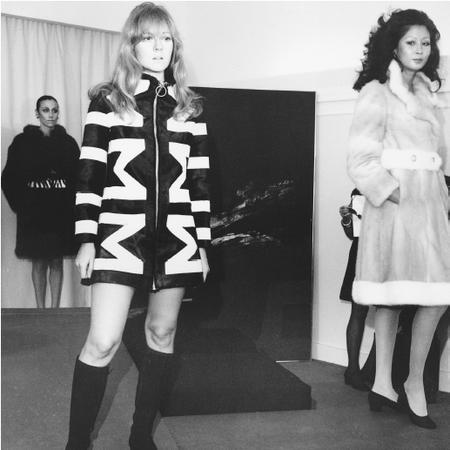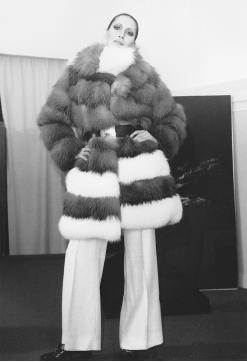Jacques Kaplan - Fashion Designer Encyclopedia
French fur designer
Born: Paris, 1924. Career: Joined father's furrier business (founded in Paris, 1889) on its move to New York, 1942; company bought by the Kenton Corporation, and Kaplan retired, 1971.

Publications
On KAPLAN:
Articles
Richardson, John, "Fauve Country," in House & Garden, February 1992.
***
"One of the few means of self expression left today is fashion," Jacques Kaplan told Grace Glueck of the New York Times in the 1960s, and in many ways Kaplan used fashion as a canvas to express many innovative new ideas.
Kaplan's business had originated with his grandparents who founded a fur business in Paris in 1889. The business moved to New York in 1942 and Kaplan eventually became the chairman and chief designer

Fur coats had long established themselves as a luxury item in fashion. Stylistically their image was somewhat stately, grand, and status conscious. Kaplan pioneered the concept of "fun furs" in unusual pelts, or fake fur, fur dresses, skirts, boots and hoods, all of which helped attract a younger, more fashion-conscious clientéle. He introduced stenciled and colored furs, and for a 1963 promotional campaign, he commissioned five avant-garde artists to paint fur coats. Marisol painted a pink nude, whilst Richard Auszkiewicz did an Op Art arrangement on calfskin.
Kaplan's philosophy was that bizarre or arty antics help to promote and sell furs. With his ranch mink coats retailing at a highly profitable $4,500 in the mid-1960s this entrepreneurial attitude certainly helped. He also found ways, however, to bring down the price of fur: in 1961 he produced a cheaper version of a black-dyed ranch mink, made famous by Jackie Kennedy. In a similar stylish, yet spare silhouette, with horizontally worked pelts, made from Japanese mink, the coats sold for $1,000 each. Kaplan was also known to stage fun fur shows in art galleries and was the first to admit he drove to work on a Honda motor scooter and underwent psychoanalysis that helped him come to terms with the idiosyncrasies of the fashion business.
In acknowledgement of the growing antifur movements in the socially aware 1960s, the company was one of the first to take a stand against the use of fur from endangered species. Kaplan himself said, "Twenty years ago I used to hate to be a furrier, I thought it was the lowest degree socially." He had learned to love the trade, though, and acquired a great deal of creative fulfillment from his role.
In the late 1960s the company was bought by the Kenton Corporation, and when they wished to sell it in the 1970s Kaplan decided to leave fashion and pursue his interests in art and painting.
—Kevin Almond
Comment about this article, ask questions, or add new information about this topic: